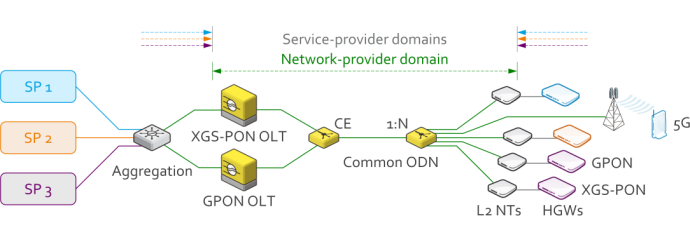A case for fibre-optic rollout in the countryside
by Tomo Bogataj, Head of Broadband Marketing, Kontron
Rural areas are experiencing a kind of renaissance, with digitalisation promising equal living conditions in towns and in the countryside. The foundation for this must, however, be created by fibre-optic rollout first. How can that work with customer potential low and investments high?
More than a quarter of the European population lives in rural regions, and even people living in the cities seem to appreciate living in the countryside. Nevertheless, a stable and reliable broadband connectivity in rural areas is fundamental to keep individuals, communities and businesses connected, and to keep the rural areas inhabited.
Access to online services such as remote work and education, administration, e-commerce and e-health is just as important for a sustainable and future-proof development of rural areas as the deployment of electrical infrastructure was decades ago. Unfortunately, the countryside is different from densely populated urban areas. Network operators shy away from expanding fibre optics in rural areas. What they need is finding the right balance between costs and demand to roll out fibre-optic open-access networks (OAN) in rural areas as well.
Separate operations and services
In an OAN, services are separate from network operations. This separation somewhat increases the initial investments for CPE, and management may be more complex. On the other hand, the network operator does not incur any costs for the development of services. Likewise, service providers have active (bitstream) access to the fibre-optic network, and do not worry about building the network infrastructure. The business risk is reduced for both sides, which makes it more attractive for investors.
As simple as 1-2-3-4-5-6-7
Iskratel proposes a seven-stage approach for the successful construction and operation of open-access FTTH networks in rural areas. The starting point is a market analysis that also includes the plans of other network operators. Competition at network-operator level should be avoided. If the market conditions are right, the partners need the support and trust of the community in order to be able to use the existing infrastructure and to find multipliers such as politicians, associations or institutions who can bring the need for a fibre-optic connection closer to the citizens.

The take-up rate
Having these multipliers on your side will have a positive effect on the take-up rate – the key figure on which the business model is based. Demand in rural areas may be high, yet the population density is low. With costs between €500 and €1,000 per connected user, it is still possible to build a viable business case for FTTH networks even in areas with only 40 inhabitants per square kilometre.
Nevertheless, it is crucial to ensure long-term financing. The return on investment (ROI) in projects with vertically-integrated networks is five to eight years. In OAN projects, at least a ten-year ROI should be allowed for. The overall investment can be determined most easily through detailed planning, which includes all subcontractors, network construction, its operation and maintenance.
Network design
A crucial point in this planning is network design. Since operations and services are separated, the network must be multi-operator capable. The roles of network operator and service providers are clearly defined, with the network able to deliver residential, enterprise, and mobile-backhaul services.
An important aspect of the network design is making it upgradeable without great effort; for example, by adding XGS-PON OLTs next to existing GPON OLTs, or implementing virtualisation for software-defined broadband access. In any case, care must be taken to avoid possible vendor lock-in as a result of proprietary hardware; instead, relying on white-box solutions makes a safer choice.

Good partnership is key
With the right planning and with the right partners, fibre-optic networks can be successfully built and operated in rural areas.
In Slovenia and Croatia, for example, the RUNE (Rural Network) project is currently the only expansion project based on partnership between two EU countries. As part of the project, 363,000 households in 210 rural municipalities in Slovenia and Croatia will have fibre optic connections with up to 1 Gb/s by 2023.
In Germany as another example, Schleswig-Holstein is the only federal state to reach the European average with over 50 percent of FTTH households. This example also makes it clear that the construction of fibre optic networks in rural regions is an endurance run and not a sprint, as Schleswig-Holstein began fibre optic expansion around five years earlier than most other federal states.
Related articles

Unlocking invaluable benefits for fibre rollouts with interoperability
Learn more
Maintaining CPE Sustainability Every Step of the Way
Learn more
Investing in the right equipment vendor can unlock your network deployment
Learn more






